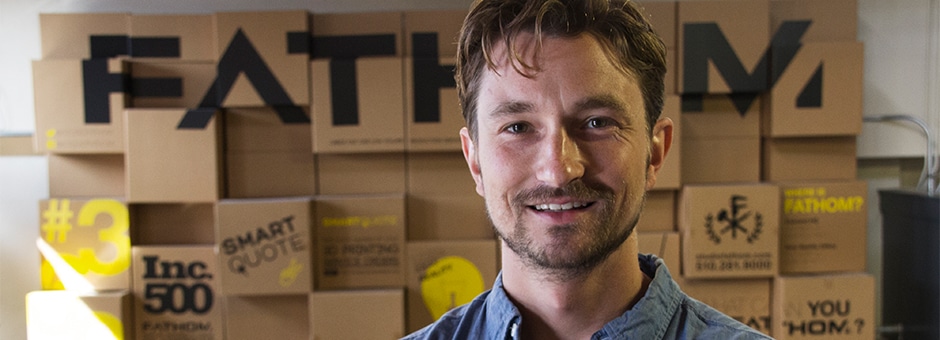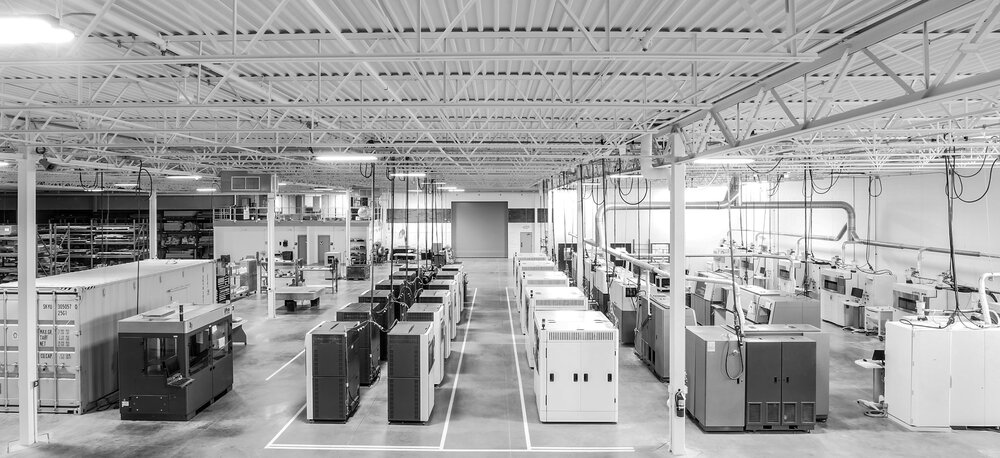Q&A Interview with Colin Caufield
Fathom is continually expanding, welcoming new faces and redefining roles for those who have been with the team for years. This week, we asked Account Manager Colin Caufield to tell us about his experience working at Fathom, the company’s expansion to the East Coast, and the importance of additive manufacturing in present and coming years. As an account manager with years of experience at Fathom, Caufield is familiar with the teams unique approach to blending additive technologies and materials with legacy manufacturing methods so companies can go from concept to prototype to manufacturing in a way that wasn’t previously possible.

Prior to your focus on the East Coast, you were an account manager for Fathom in Northern California — how has your role at the company evolved since you originally joined?
Caufield: My role is similar insofar as I still focus on account management at Fathom. Having grown up in Connecticut, I am not new to the East Coast, but there are many companies and professionals I have yet to meet. The main difference between my time in the San Francisco Bay Area and now is that I direct my attention entirely to Fathom’s advanced prototype fabrication and bridge-to-production services for accelerated product development: 3D printing (FDM, PolyJet, SLS, DMLS and SLA), rapid tooling and injection molding, urethane casting, CNC machining, model finishing and more.
As for the way I have evolved as a Fathomer, the knowledge and experience that I gained in the first couple of years helped me recognize all of the application types that benefit from Fathom’s capabilities, especially in less obvious scenarios. That said, I feel more effective when reaching out to new companies with whom we dont have a prior relationship in hopes of offering them extremely useful solutions to their production challenges.
Fathom has been based out of the San Francisco Bay Area since 2008, expanded to the Pacific Northwest by establishing a presence in the Greater Seattle Area in 2010 and later opened its second production center in 2013 to support the nation’s growing demand for its advanced manufacturing services — what are your thoughts on the company’s most recent investment in reaching the East Coast?
Caufield: I think its a wise and worthwhile effort for many reasons, but it is especially nice to be closer to companies who are already working with Fathom. Many tech and medical device companies are located in the Greater Boston Area, industries that Fathom is very familiar with. We understand the challenges these organizations face and know what advanced manufacturing services will best enhance their product development. New York City has seemingly infinite design firms and startups were looking forward to working with, too. I read a statistic recently that referred to the eastern seaboard between Boston and DC as the Northeast Megalopolis, accounting for 20% of GDP in the United States. Meeting the growing demand for our services on the East Coast is important to us and is critical to our goal of ubiquity in the advanced manufacturing conversation.
As we cross the midpoint of the fiscal year, what are you looking forward to most in the second half of 2015?
Caufield: There are companies launching disruptive new products that I hope to be able to share publicly before the end of the year and Fathom plans to enter really exciting competitions in the additive manufacturing space that Im looking forward to managing. Mostly, Im excited to see Fathom’s continued growth beyond the Pacific Northwest.
You’ve witnessed and facilitated incredibly innovative and industry-changing applications for 3D printing and other additive manufacturing technologies — what do you tell people who regard 3D printing as a novelty or fad?
Caufield: Beanie Babies were a fad. 3D printing is more like the internet. It had early adopters and initially it had competing platforms like America Online and Prodigy whose usefulness and applications were often more novel than necessary. Roughly 20 years after it hit major news sources and many American households, its now something that most of us cant live without, let alone conduct business without. 3D printing is much the same.


